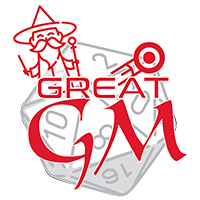Equipment Keywords
Keywords are employed to help minimise the amount of rules text provided for some types of equipment. The following information deals with the keywords employed in the following equipment tables. Eg: stats for such weapons as pistols, rifles, and other projectile or melee weapons.
Artillery - This item of equipment is fired via the use of the Artillery skill, without ranks in this skill the weapon cannot be used.
AA:X/X – This weapon was designed for the Anti-aircraft role and thus mountings are designed for firing the weapon vertically. The numbers also define the weapons range increments; the first number is for horizontal fire at ground targets while the second is for vertical fire at airborne targets.
Backpack – This item of equipment includes a backpack and thus no other items can be carried on the character's back.
Cumbersome - This item of equipment is heavy and difficult to use, thus gaining a -4 to attack rolls and skill checks.
Hefty - This item of equipment is large or heavy but yet still handheld, thus gaining a -2 to attack rolls and skill checks.
Crew:X - This keyword denotes the minimum number of crew required to service/operate the weapon. It does not include Officers (who normally select targets and oversee multiple weapon crews) or extra crew for handling ammunition, boxes, etc. Characters acting as crew for a weapon can perform no other actions apart from servicing the weapon.
SROF:X - This keyword denotes an item of equipment with a slow rate of fire, the number represents the number of rounds required in order to fire one shell. Eg: a SROF:4 weapon will fire one shot every four rounds. Weapons with a Crew:? The listing will require a full crew in order to fire, for each crew member less than this number the SROF time is increased by 2. Artillery weapons that Rapid Fire (see: Artillery Skill for details) gain -1 to the SROF stat (to a minimum SROF:1). This stat assumes that ammunition for the weapon is close at hand and in a state of readiness. If ammunition has to be unpacked from carrying cases then the speed of firing will be hampered greatly (this is why some weapon crews are larger than normal as the extra crew work to supply ammunition to the weapon).
SETUP:X - This stat equals the number of full combat rounds required to assemble or disassemble the weapon. All weapons with this stat once set-up has a 45-degree field of fire that must be established once the weapon is set in place. To fire at targets outside this field of view the crew must reset the weapon which takes half as long as the normal set-up time (this assumes the crew is merely pivoting the weapon in place instead of moving it fully if the weapon needs to be fully moved then the crew must go through a full set-up again in the new position). Weapons that have been disassembled into pack loads require more time to set up than already assembled weapons (eg: a field gun takes longer to set up it is disassembled in comparison to the same gun on its wheeled mount), thus assembling a weapon from pack loads adds 1 to the Set-up stat per every two-pack loads.
Tricky-Magazine - Because of the nature of the weapon it suffers from jamming if a full magazine is loaded, when the first shot from a “full” magazine is fired automatically roll a Concentration check against DC25. If failed the weapon jams on the first bullet and requires a move action to clear the jam.
Min-Range:X - This keyword refers to the minimum range at which the weapon can be used. For one reason or another, the weapon cannot be used to fire targets within the listed number. Eg: Min-Range:100 means that the weapon can not fire at targets within 100ft.
Shield:X - Some field guns come with a mounted shield that the weapons crew can take cover behind. The shield provides a defence and reflex save bonus equal to the displayed number. Eg: Shield:2 means the crew gain +2 to defence and +2 to reflex saves. These bonuses only apply to the total number of crew members as per the Crew keyword, plus for a character to gain the bonus they must be currently crewing the weapon.
Masterwork – For one reason or another the weapon is easy to handle, use, or function flawlessly. These weapons confer a +1 to all attack rolls and skill checks.
Inferior – For one reason or another the weapon is difficult to handle, use, or functions poorly. These weapons confer a –1 to all attack rolls and skill checks.
Pack:X – This stat denotes the number of pack loads the weapon breaks down into for transport by mule or soldier. The heaviest object weight may be displayed, otherwise, divide the weight of the weapon by the number of pack loads to gain the average weight of each pack. Machine guns with this stat automatically assume that the machine gun itself forms one pack load and the mount (normally a tripod), forms the second pack load – while other loads may be the water container or other equipment needed for the machine gun. A character that is carrying a pack load cannot carry any other weight or packs on their back; it is assumed that the pack load is carried in the form of a backpack. Most weapons that can be broken down into pack loads also come with a pack frame per load to be carried. This stat only accounts for the weapon itself, ammunition has to be considered separately.
Overheat:X – This weapon is prone to overheating and malfunctioning when overheating. The most common problem encountered is the warping of the barrel from the intense heat caused by the friction and hot gasses created by fully automatic weapons. The weapon gains one heat point per attack action or two per full-round attack. Once the weapon has gained heat points equal to the number displayed for the weapon the user now makes an Overheat Saving Throw (DC10) for the weapon per burst fire action to resist the weapon suffering from the effects caused by being too hot. If the save is higher than the DC the weapon continues to function (it still gains a point of heat), but if the save is equal or less the weapon has suffered from the effects of being too hot and malfunctions – it can not fire until repaired. Each heat point gained in excess of the weapon Overheat stat is added to the Overheat Save DC. Heat points are lost at a rate of one per full round spent without firing.
Barrel:X – A number of machine guns include a quick-change barrel feature, where the barrel can be quickly removed and replaced. The number listed is the number of full-round actions required to change the barrel by the weapons crew, for each missing crew member the time is increased by 1. Once the barrel is changed the effects of being overheated (see the keyword: Overheat) are negated and all accumulated heat points are removed.
MG:X/X – Weapons such as the Machine Gun can be used in either a Light or Heavy role. In the light machine gun role, the weapon can be carried and used as a two-handed weapon with or without the use of a bi-pod, in this role the range increments equal the first number displayed before the slash. In the heavy role, the weapon is operated from a tripod mounting to stabilize the weapon and thus give it a greater effective range. Some mounts even include special optics or sights that permit very long-distance firing (almost mortar-like as the bullets fall slightly at long range), in this instance the second number after the slash is used for the weapons range increments. Weapons with a dash instead of a number cannot be used in that role. Eg: the Browning Heavy Barrel M2HB is MG:-/145, thus it can only be used in the heavy machine gun role. Once a machine gun is set up on its mount, it no longer suffers from the Cumbersome attack modifier.
HMG:X – This stat is used to work out how many combat rounds are needed for a team to assemble or disassemble a machine gun on its heavy mounting. Machine Guns without a Crew (see Crew:? above) stat requires two people to set up the mount, and machine guns with a crew stat require that number of people to set up the mount. For each person below that number, the time is increased by a further two combat rounds. Once set up the machine gun has a 45-degree field of fire in one direction as per normally mounted weapons. To fire at targets outside this field of view the crew must reset the weapon which takes half as long as the normal set-up time (this assumes the crew is merely pivoting the weapon in place instead of moving it fully if the weapon needs to be fully moved then the crew must go through a full set-up again in the new position).
Oil – Japanese machine guns had to use pre-oiled ammunition, thus all fumble DCs with these weapons gain +2. If pre-oiled ammunition is not used the weapon gains +4 instead of +2.
Mounted – This is not a dis-mountable infantry weapon. It is only found in vehicles or building mounts.
Flamethrower - A flamethrower projects a 5-foot-wide line of flame that deals 3d6 points of fire damage to all creatures and objects in its path. No attack roll is necessary, and thus no feat is needed to operate the weapon effectively. Any creature caught in the line of flame can make a Reflex save (DC 15) to take half damage. Creatures with cover get a bonus on their Reflex save. A flamethrower’s backpack has hardness 5 and 5 hit points. When worn, the backpack has a Defense equal to 9 + the wearer’s Dexterity modifier + the wearer’s class bonus. A backpack reduced to 0 hit points ruptures and explodes, dealing 6d6 points of fire damage to the wearer (no save allowed) and 3d6 points of splash damage to creatures and objects in adjacent 5-foot squares (Reflex save, DC 15, for half damage). Any creature or a flammable object that takes damage from a flamethrower catches on fire, taking 1d6 points of fire damage each subsequent round until the flames are extinguished. A fire engulfing a single creature or object can be doused or smothered as a full-round action. Discharging a fire extinguisher is a move action that instantly smothers flames in a 10-foot-by-10-foot area.
Wooden - These land mines can not be detected with a metal detector.
Bi-pod - The weapon includes a Bi-pod as part of the weapon's construction. With the Bi-pod deployed and rested against a steady surface the weapon is more stable and gives a greater degree of accurate fire. When using the bi-pod the character gains a +2 attack bonus but is restricted to a 45-degree field of fire once the bi-pod is set in place.
Remove these ads. Join the Worldbuilders Guild










Comments